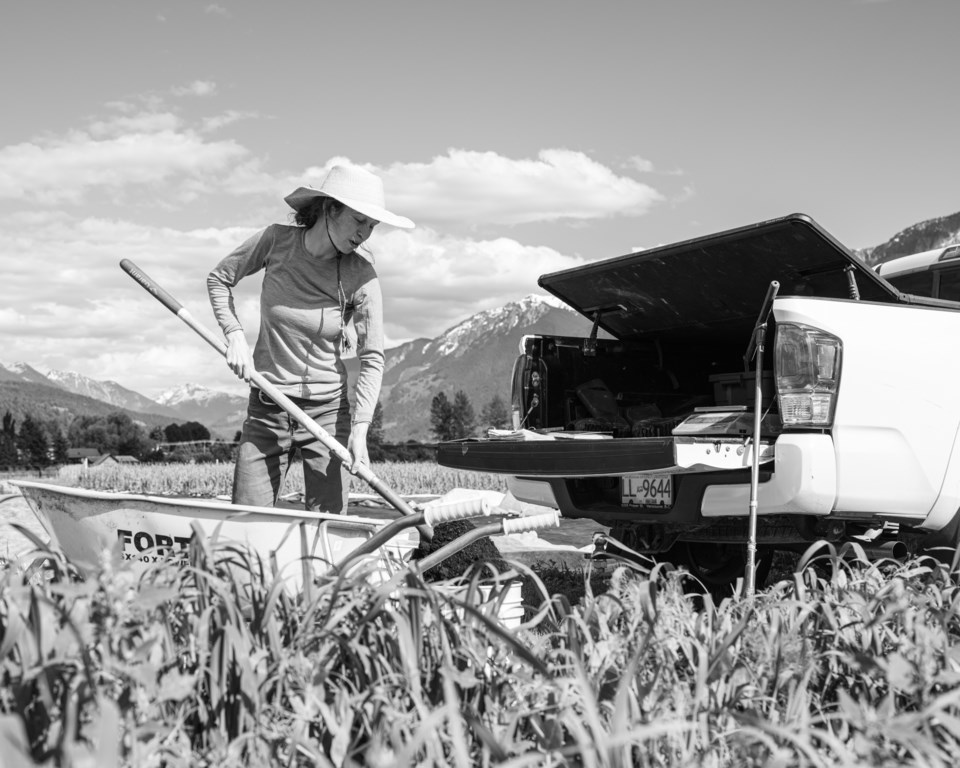Amy Norgaard works at the Sustainable Agricultural Landscapes Lab at the University of British Columbia and has the task of assessing the province’s agricultural greenhouse gas emissions.
A recent graduate of UBC, Norgaard got her master’s in soil science with a specialization in organic vegetable production, and has worked with about 20 organic farms in B.C. to help them meet and balance their environmental and production goals.
Canada’s National Observer spoke to Norgaard about her current project and how COVID-19 has changed the way people look at food security.
What do you do as an agrologist?
To put it in general terms, I'm a soils instructor. I teach people about soils and sustainable soil management. It goes hand in hand with using composts, soil science principles, and some general sustainable practices. My work is predominantly in two areas — research and education. The third is crop production.
Why do you feel a foods curriculum must be integrated into our early school education system?
We eat three times a day. A foods curriculum teaches us about food security and gives us an opportunity to impact the world around us by carefully choosing what we eat. If we change what we eat, it will change what is grown. Through collective action, our landscapes will shift.
We all learned how to recycle because of school campaigns. We then took that information home. We have a large school population, and food security education can help shape those minds.
After finishing your bachelor's of science in agroecology, you went “wwoofing” in Switzerland and Denmark. Can you tell us something about that?
Yes, I always wanted to go “wwoofing” which is you volunteer on farms in exchange for room and board. I spent about two and a half months in Switzerland and Denmark on four different farms.
In Denmark, one of the farms was actually a school. Their schooling is so much different than ours. They have space for a lot of “alternative education.” If a group of parents decides to start a school, all they have to do is find some teachers, a headmaster and a building. It kind of blows my mind. My role was to cook lunches for these kids every day. It was a vegan school because a famous vegan restaurant in Copenhagen owned the school building and had an agreement with the parents to run a vegan farm. There was this challenge of “How do I feed non-vegan kids vegan food?” I’m not vegan myself. Seeing the headmaster and headmistress so dedicated to land stewardship, alternative education and cultivating a creative and better farm system was inspiring.

Amy Norgaard weighing amendments (compost and organic fertilizer) to apply to research plots on an organic vegetable farm for a UBC nutrient management regional field trial study in Pemberton, B.C.
Your master’s project involved nutrient management trials in B.C. How did that help the farmers?
One substantial issue we face right now in the province is the excessively high amounts of phosphorus found in the Fraser Valley. It is an agronomic inefficiency and also an environmental hazard.
Based on previous years of research and trials on the UBC Farm, we knew what tradeoffs looked like in terms of greenhouse gases, yields and nutrients.
My project evaluated three organic nutrient management strategies in terms of crop yield, soil properties, and input costs. These strategies were most successful when tailored to a farming system that balanced crop production, potential environmental pollution and input costs. The balance is best met when specialty organic fertilizers are used in combination with lower-nutrient composts.
My research allowed me to test a new management practice for calculating application rates (of composts) based on nitrogen and phosphorus crop removal.
What are you working on now?
Currently, we’re measuring emissions that arise specifically from agriculture. This includes manure management, livestock, agricultural soils, and also farm energy use, such as heating greenhouses and driving tractors. We’re also examining how changes in land use, for example the ratio of annuals to perennials planted, can help farmers manage soil nutrients.
We are obligated at an international level to meet the 2030 emission targets. So there's this top-down pressure now on all sectors. Our job is to identify where the emissions are coming from and find best practices to reduce them at a reasonable cost for farmers.
Do you think COVID-19 changed the way people look at food security?
Based on my own research, people appear to agree a robust local food system makes us more resilient in these times. Anecdotally, I lived on a Pemberton farm for a couple of years where community-supported agriculture (CSA) is popular. During the pandemic, organic farms not only hit their usual CSA numbers, but a lot of the farms doubled their capacity because people wanted an assured food supply. At first, I was worried when borders closed and supply chains were mixed up. But then I was like, “Oh, wait. This is the time to shine for small-scale organic farmers.”
Priya Bhat / Local Journalism Initiative / Canada’s National Observer
